When people find out I’m an archivist, I am often greeted with a very puzzled look and usually another question—like, “What’s that?”
On any day, you can find me processing collections of documents, records, photographs, or moving image materials. As archivists, one of our main priorities is to make sure items are stored and organized properly in order to maintain the longest record life possible. In this blog, I’ll discuss processing a large manuscript collection that includes all of these items.
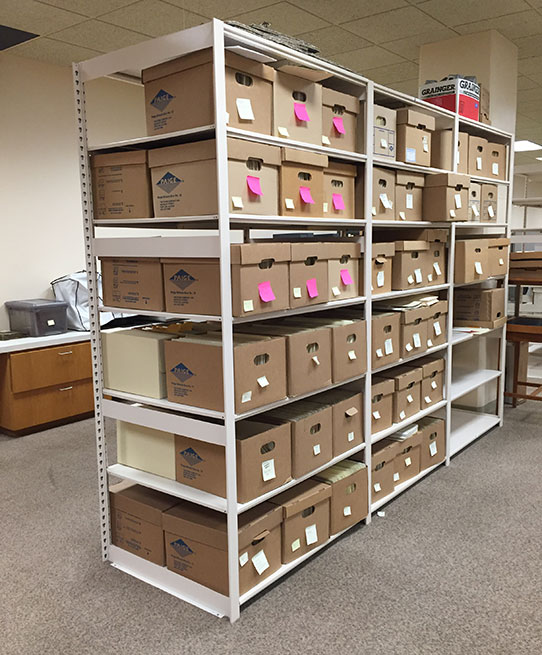
Some of the processed materials from the Frank Vyzralek Collection
Over the past year, I and other archivists at the State Historical Society picked up personal papers, research, and records belonging to Frank Vyzralek, North Dakota’s first state archivist. Vyzralek was a passionate historian who researched a great variety of topics in relation to North Dakota such as baseball, beer, the city of Bismarck, crime, mills and elevators, places in North Dakota, railroads, and steamboats.
When Vyzralek’s donation arrived at the State Archives, almost 400 feet of boxes contained loose papers, photographs, and audiovisual materials. We had to determine how to best organize and store this valuable collection.
The first step we took was to establish series for the different materials. In the archives world, a series is a group of similar records. The series we decided on were Research Files, Personal Papers, Photographs, and Audiovisual Materials. Within the series, we then created subseries and sub subseries that reflected the topics and types of records with each series.
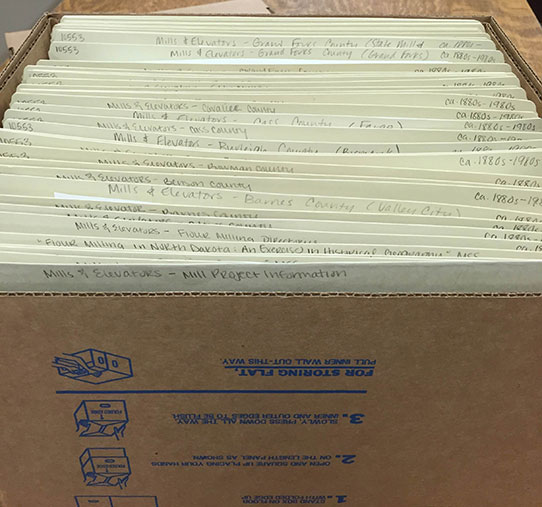
Processed records from the Mill & Elevator Sub Subseries alphabetized and dated in archival folders
After the series, subseries, and sub subseries were established, we began the preliminary sorting. Most of the time, each box contained many different topics and types of records in no particular order. Along with the paper items, some boxes even had different types of artifacts like matchbooks and other collectables. These items will be offered to the Museum Division, because they are three-dimensional. This part of the processing took my colleague and I about three months to complete.
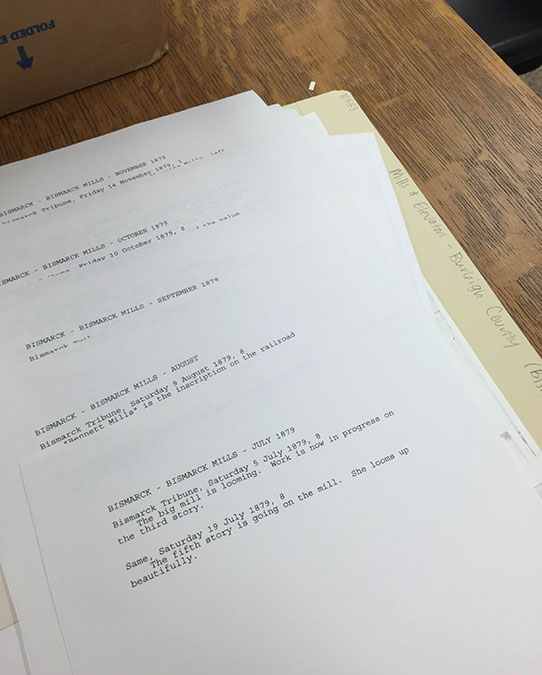
Newspaper clippings regarding mills and elevators in Burleigh County in chronological order
When we finished with the preliminary sort, we began a more in-depth process, where we tackled each subseries, organizing the records by location or chronologically. Vyzralek liked to use newspaper clippings in his research. For one sub subseries, for example Mills and Elevators, it took some time to organize the thousands of newspaper clippings in a way that would be useful to researchers who will use Vyzralek’s papers in the future. After eight months of alphabetizing and organizing chronologically, this part of the processing was complete. During this stage, we came across a few live bugs and spiders. It added some excitement (and screams) to the process.
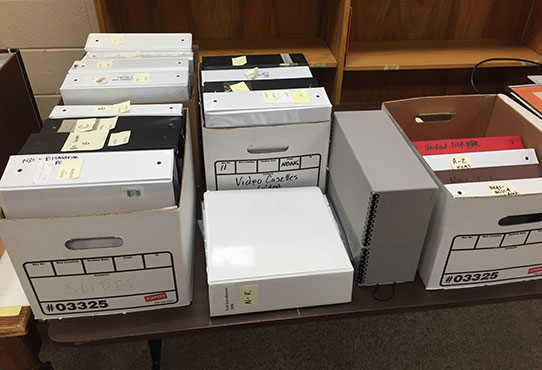
Processing in progress on photographs
Once we were finished with the paper records, we began to process the photographs Vyzralek took or collected. Again, we had to decide how to organize the photographs in a way that would create the best accessibility for researchers. We thought it would be best to organize the photographs by those Vyzralek used for research and those that related to his personal life, such as family and school photos. Just as we did with papers, we organized the photographs by location and date. Topics in the research photos include railroad depots, postcards, aerials of towns, churches, breweries, and other buildings in North Dakota.
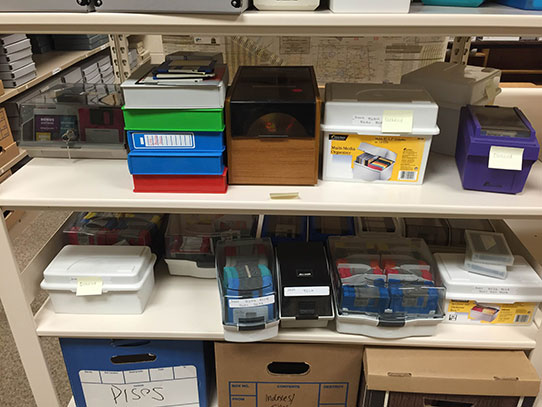
Hundreds of floppy disks from the Frank Vyzralek Collection
Vyzralek stored much of his research on floppy disks, which will also be in his collection. However, floppy disks are now obsolete. As we process the physical papers, we also have to harvest the files of his research off the floppy disks to make sure the digital files are accessible to researchers, too. This entails finding a floppy disk drive, scanning for viruses, and ensuring there are no changes to the file during the processing of the digital files. Digital files provide more accessibility to the collection.
We are still processing the Frank Vyzralek Collection, but it will be finished in spring 2016. Once processing is complete, there will be a finding aid available on our website (http://history.nd.gov/archives/manuscripts/inventory/10553.html) for researchers to use. This is just one of many rich collections of North Dakota history that can be researched in the State Archives.

